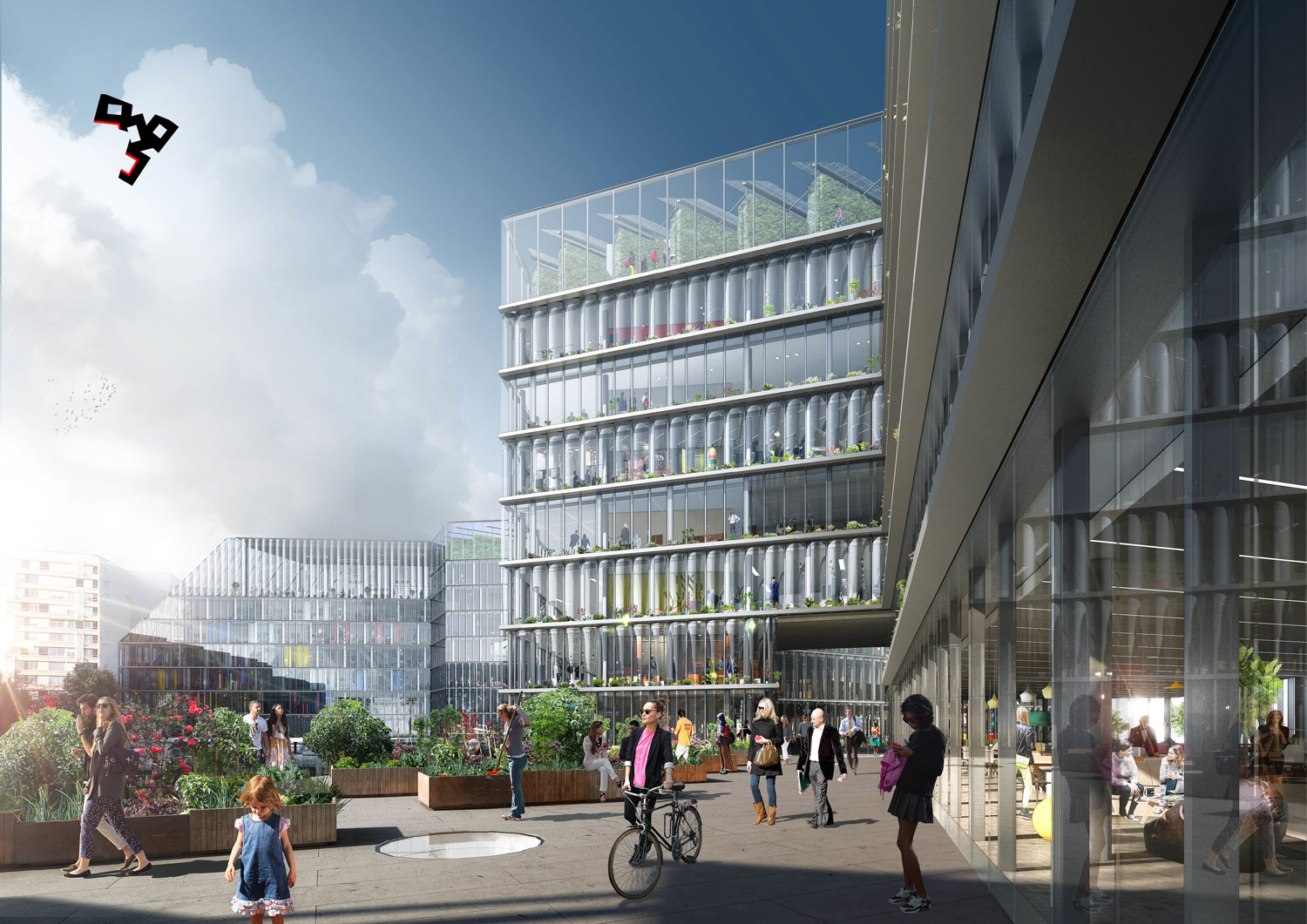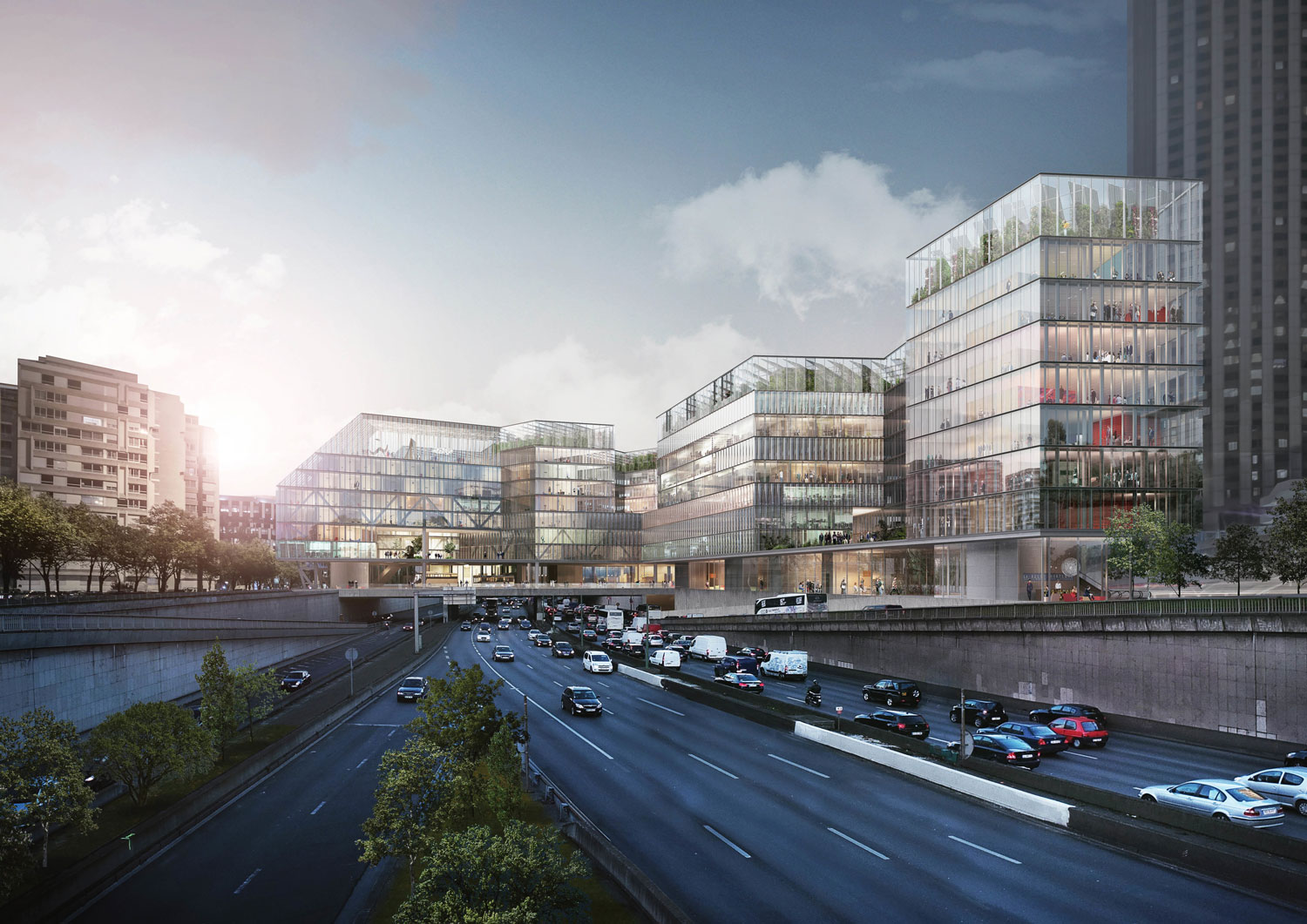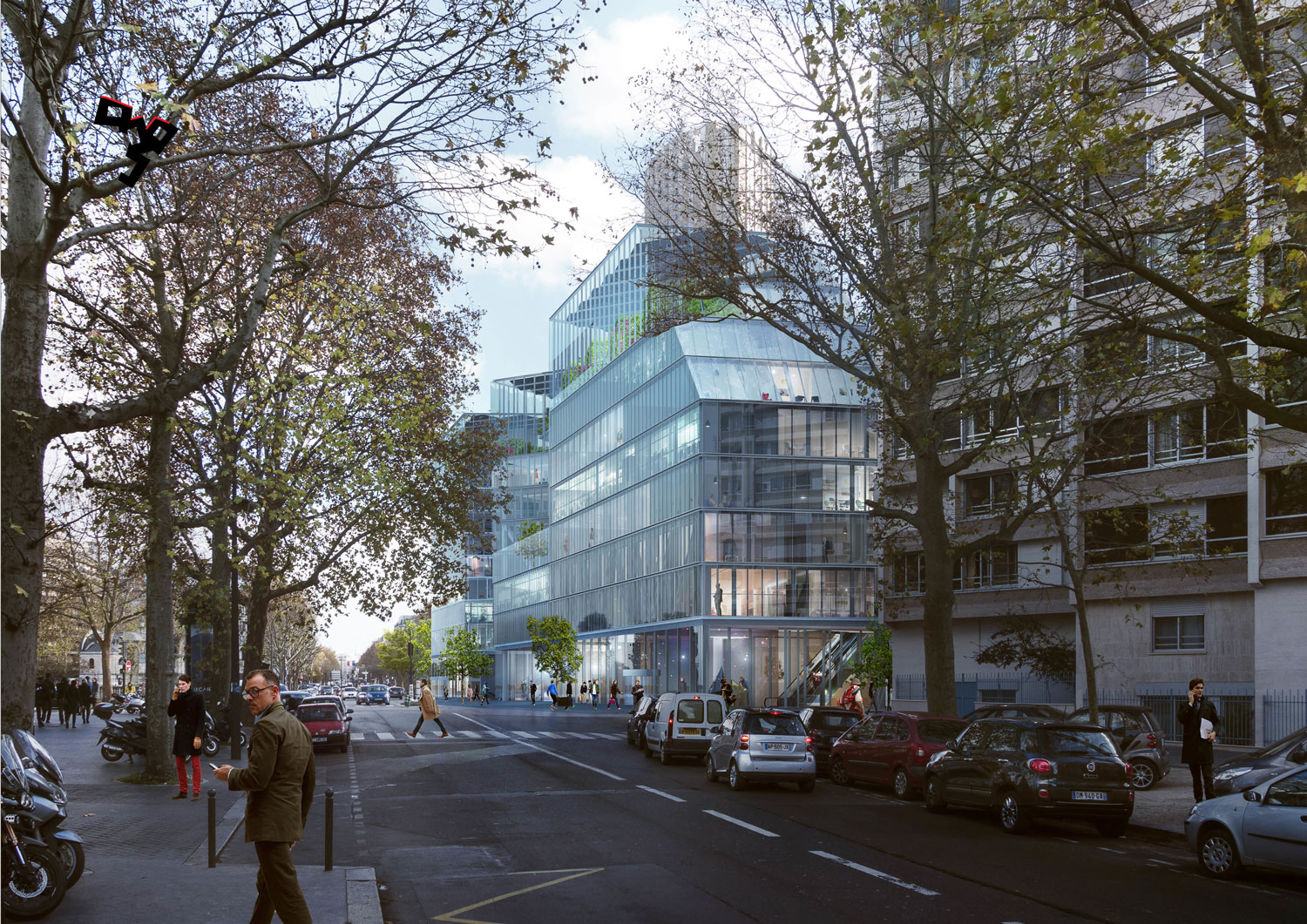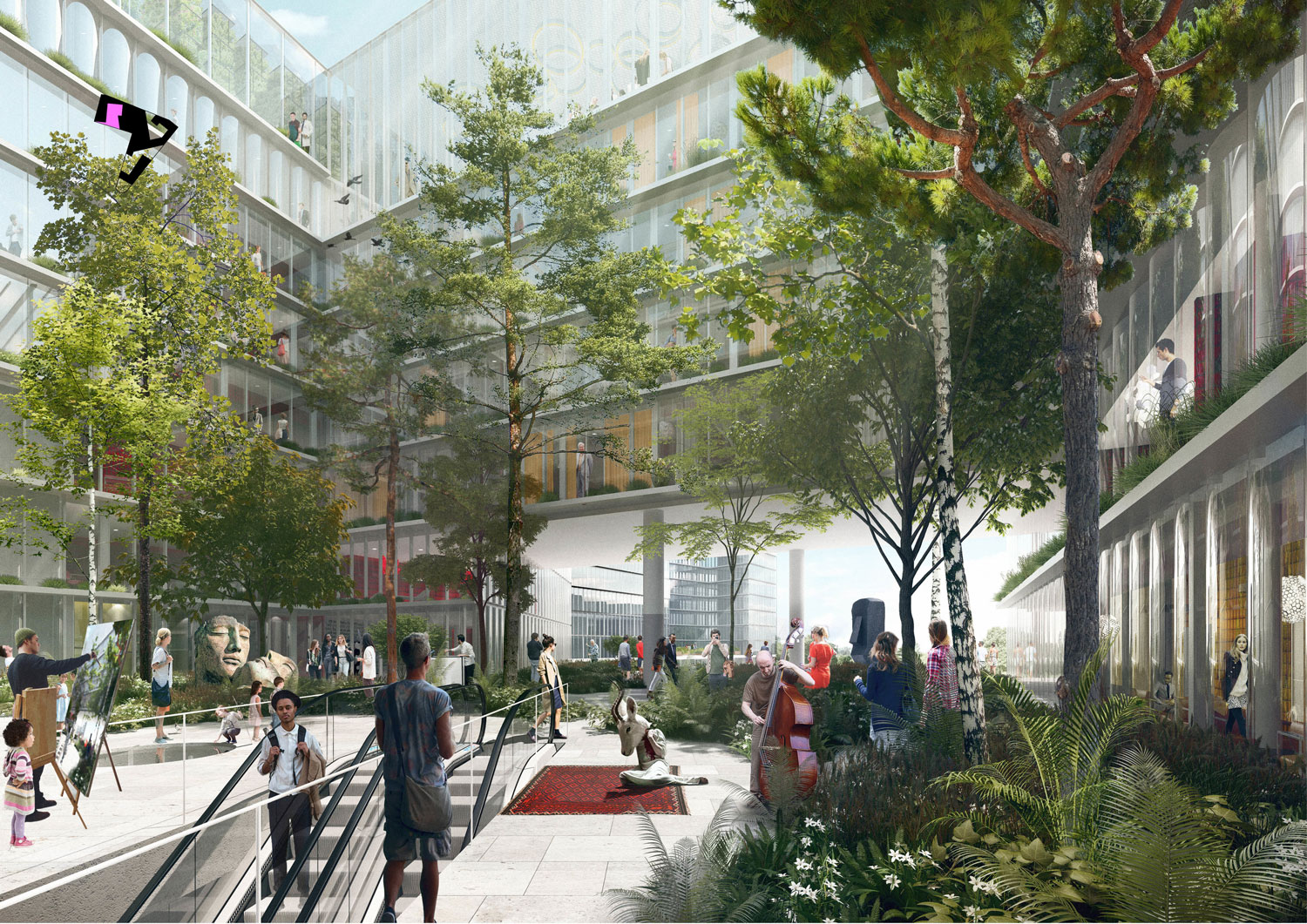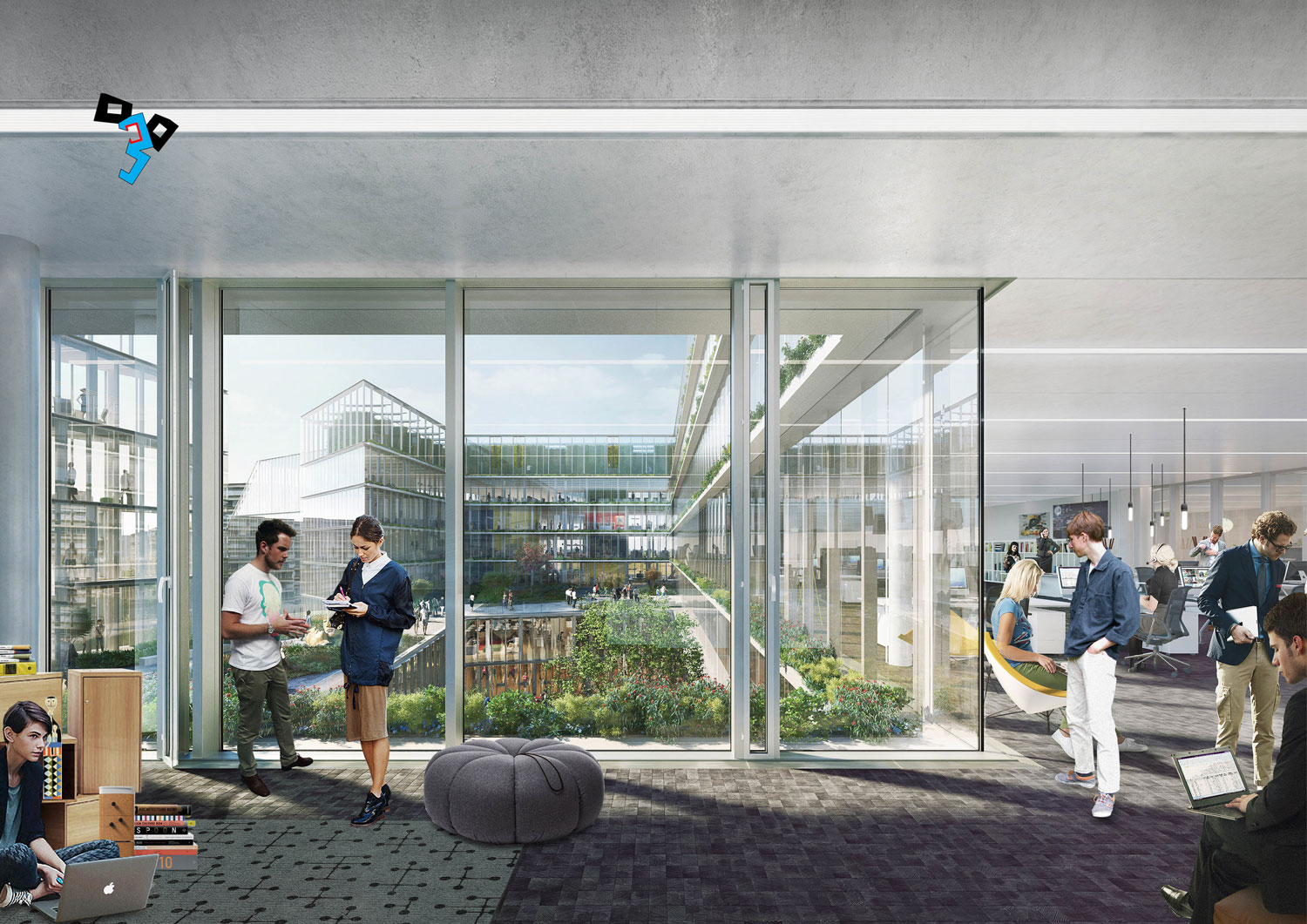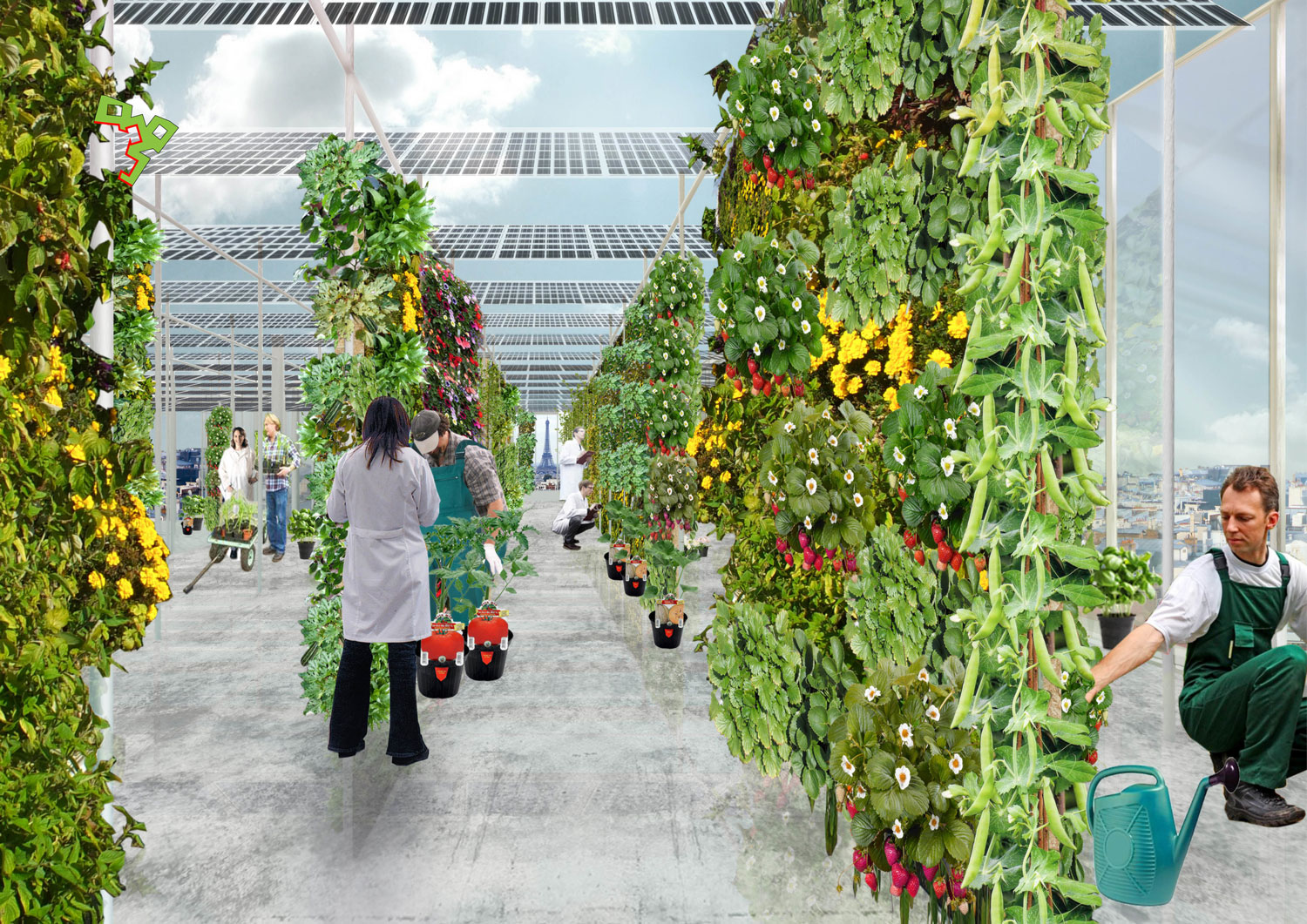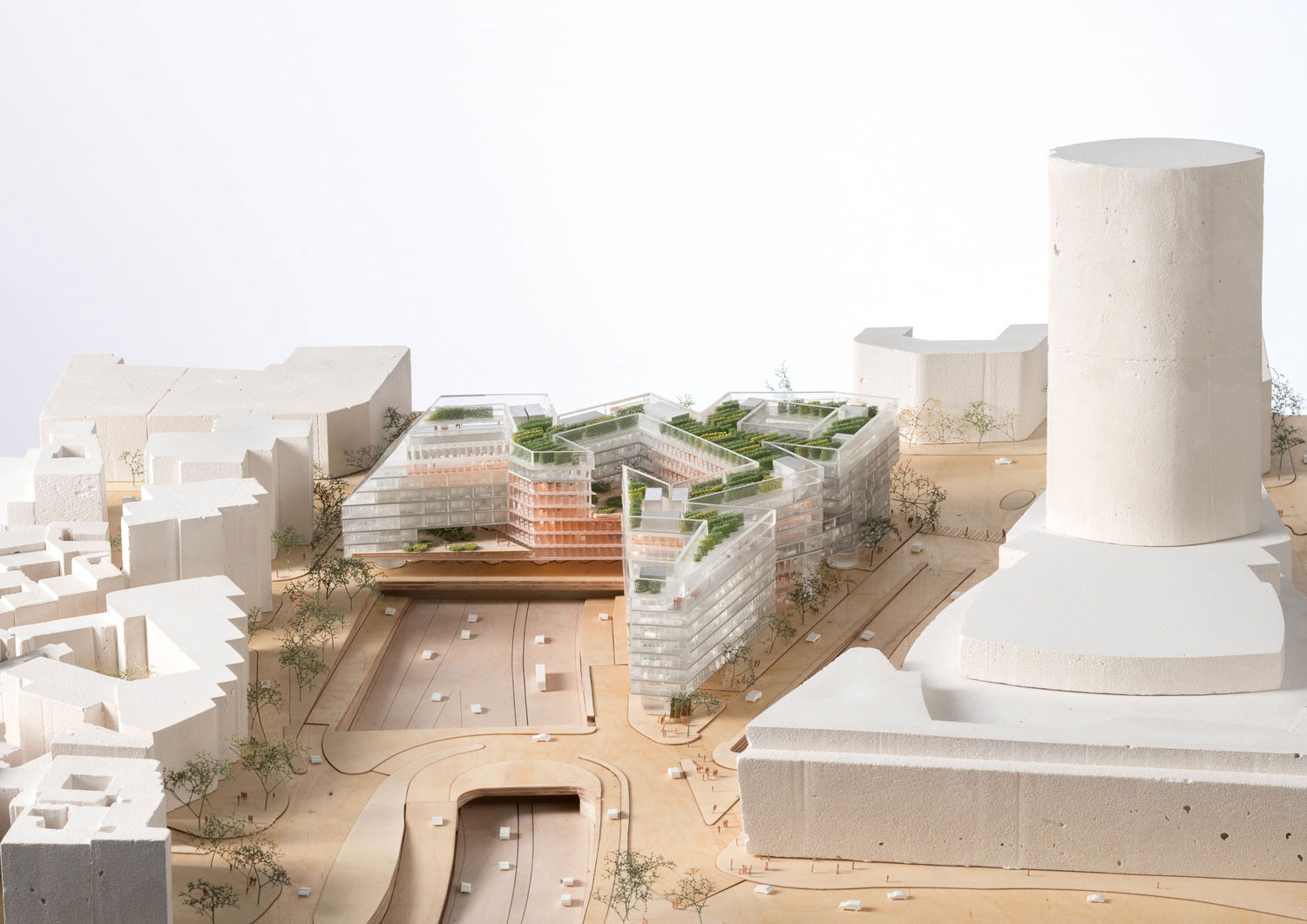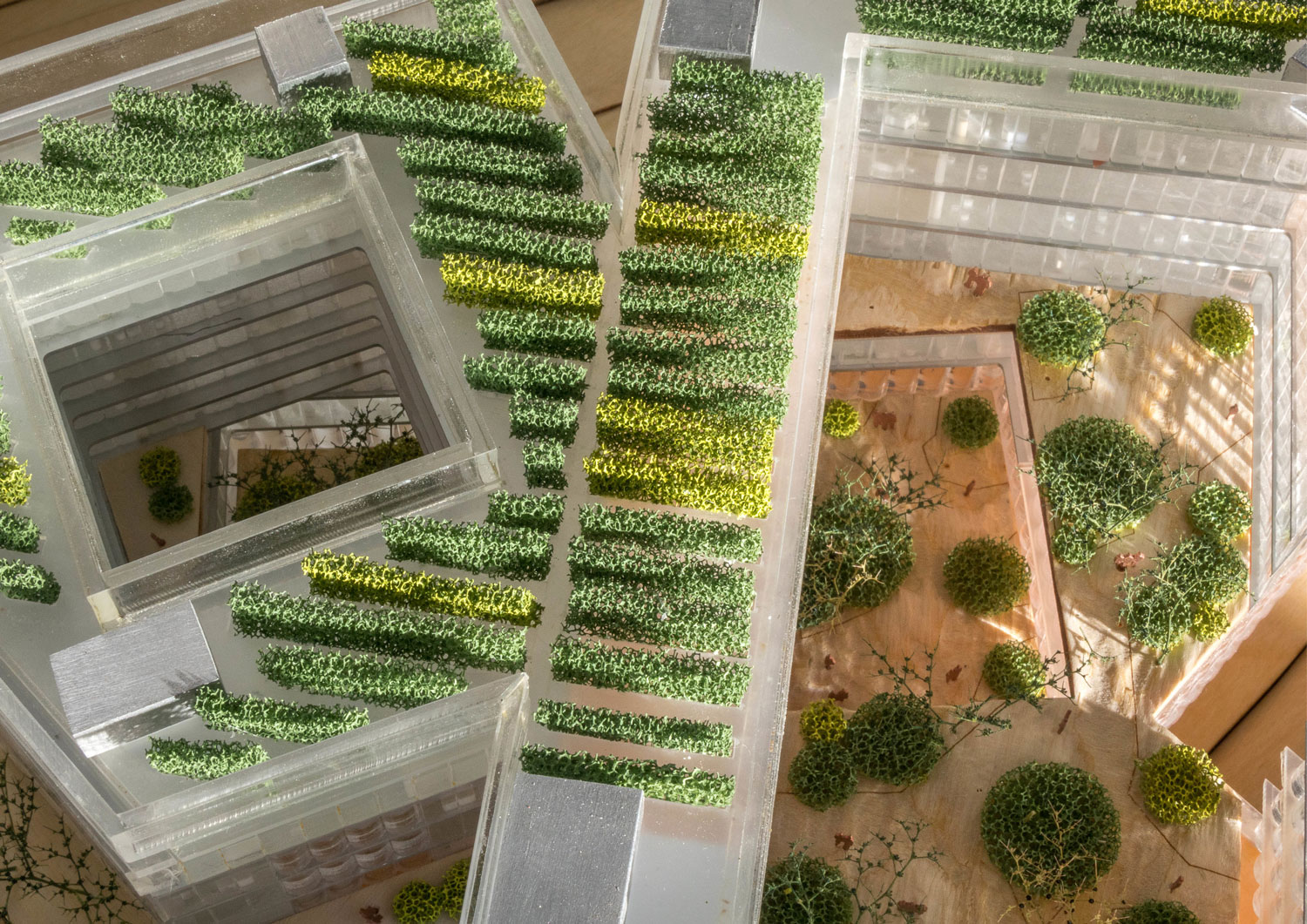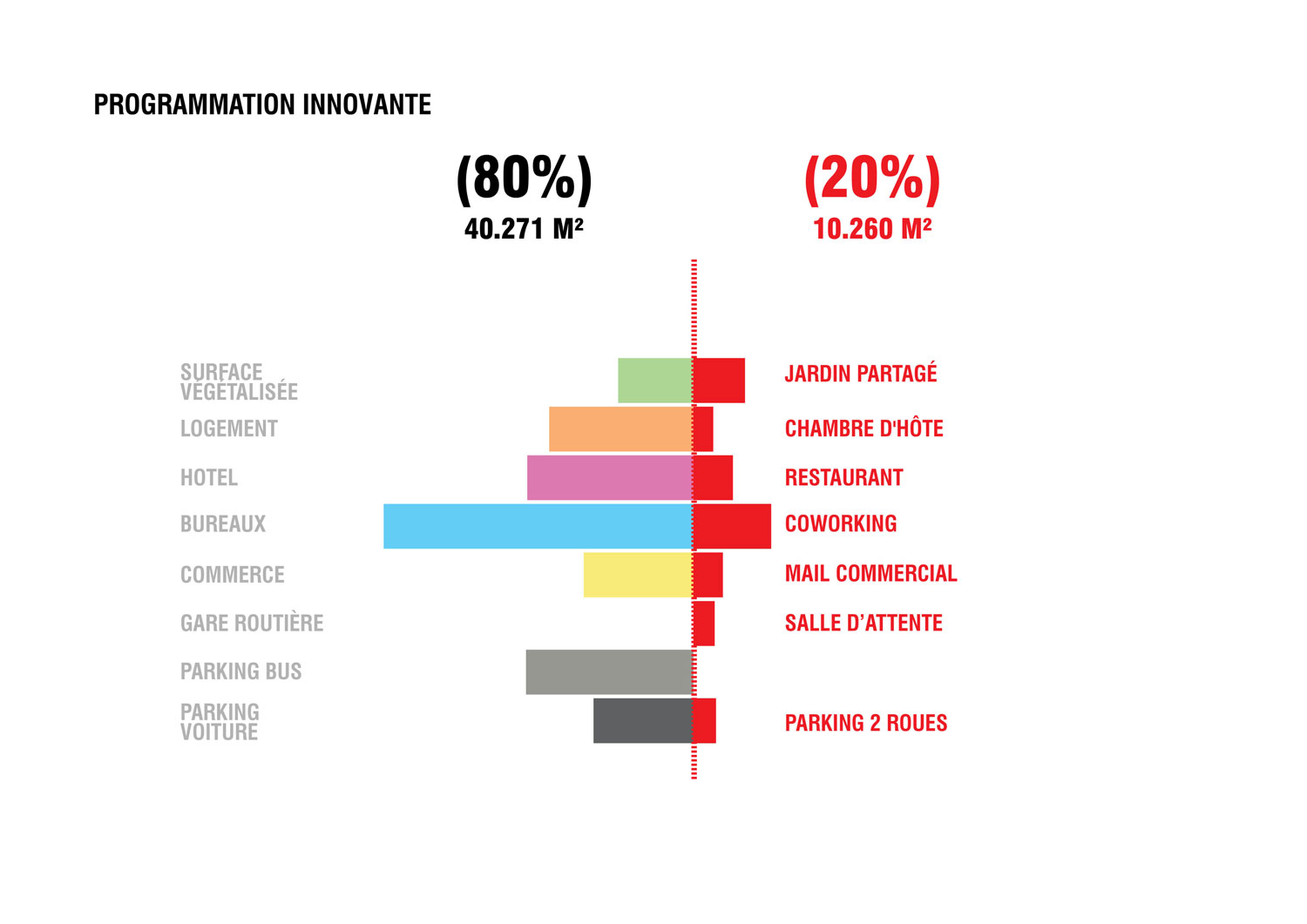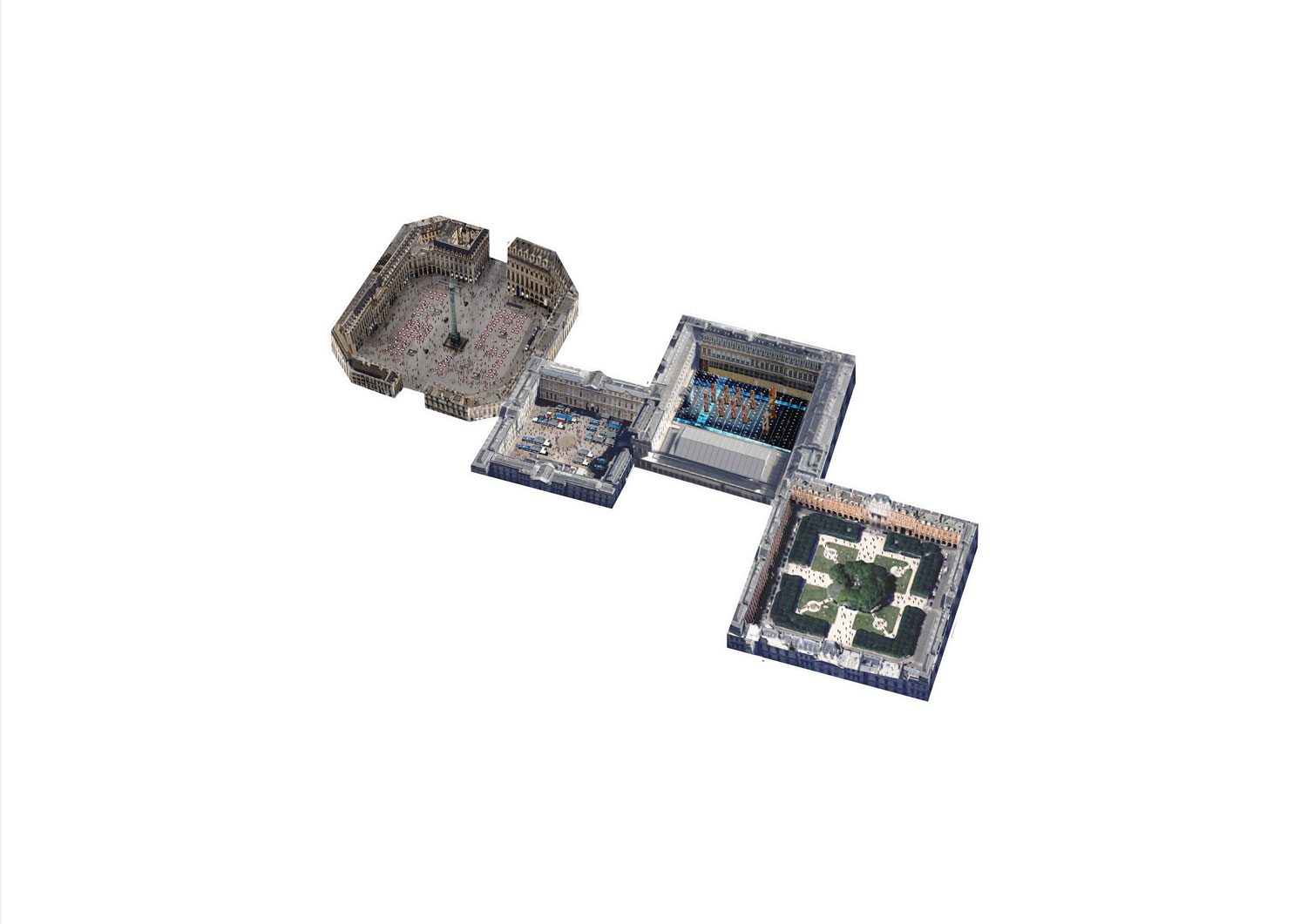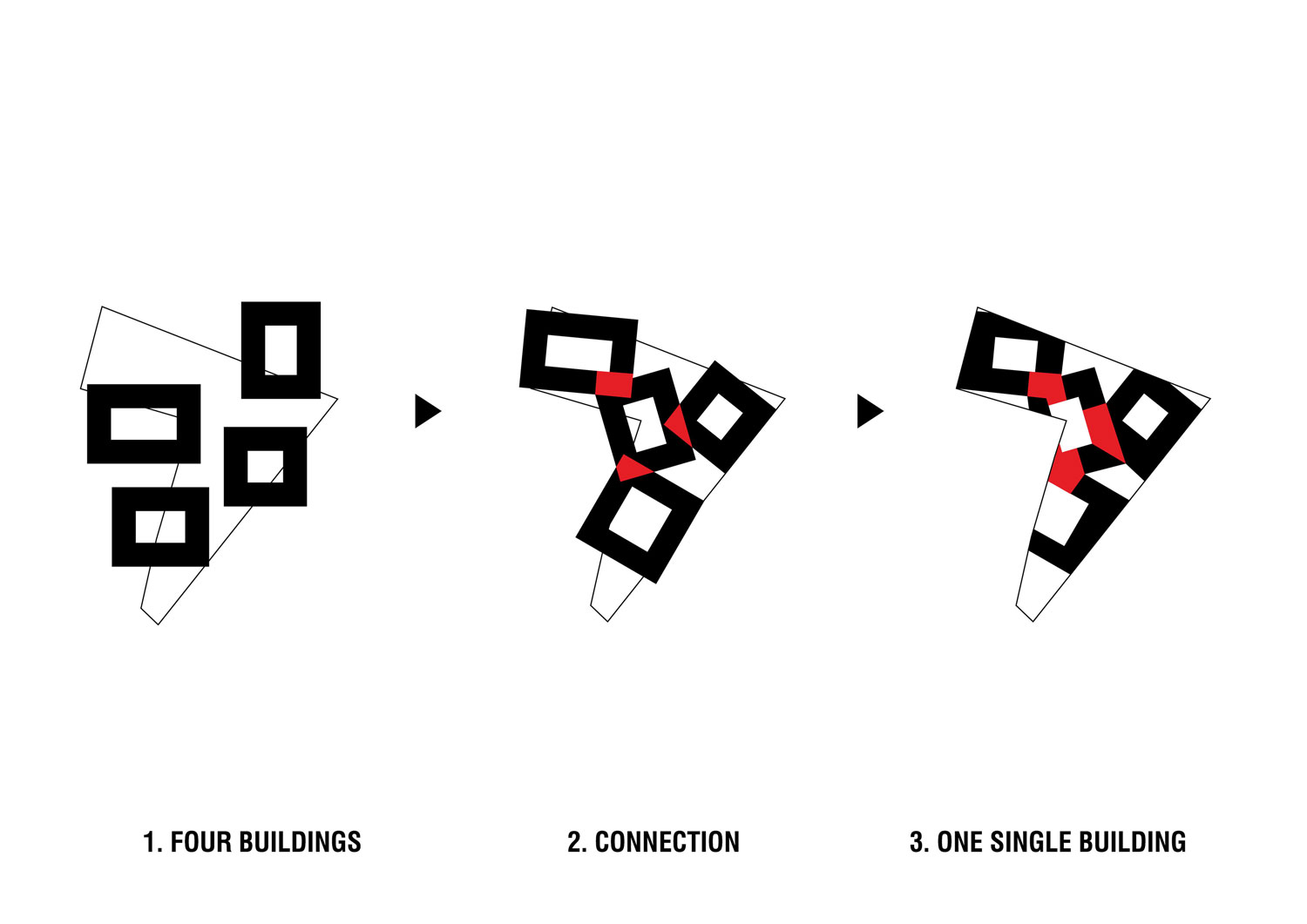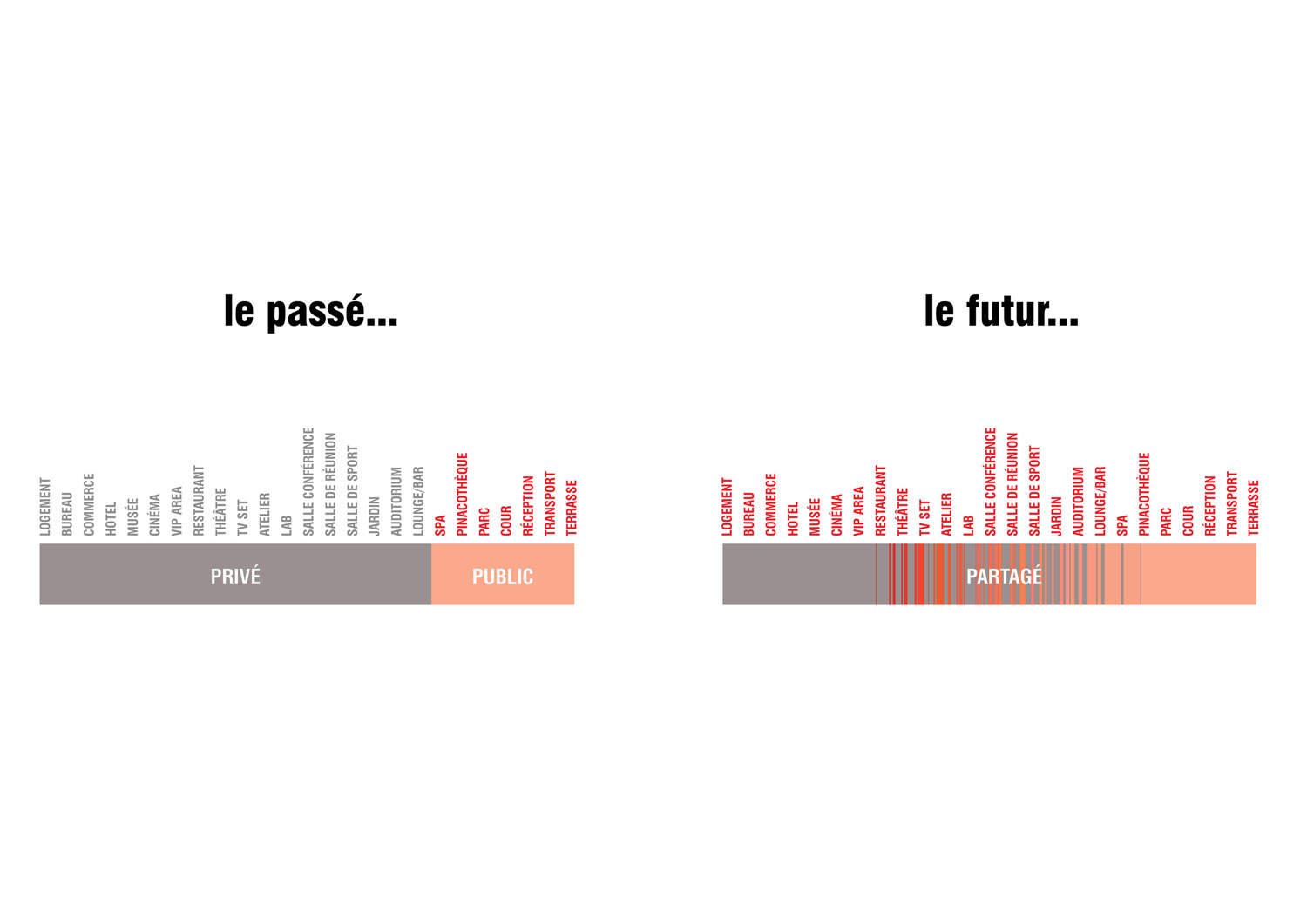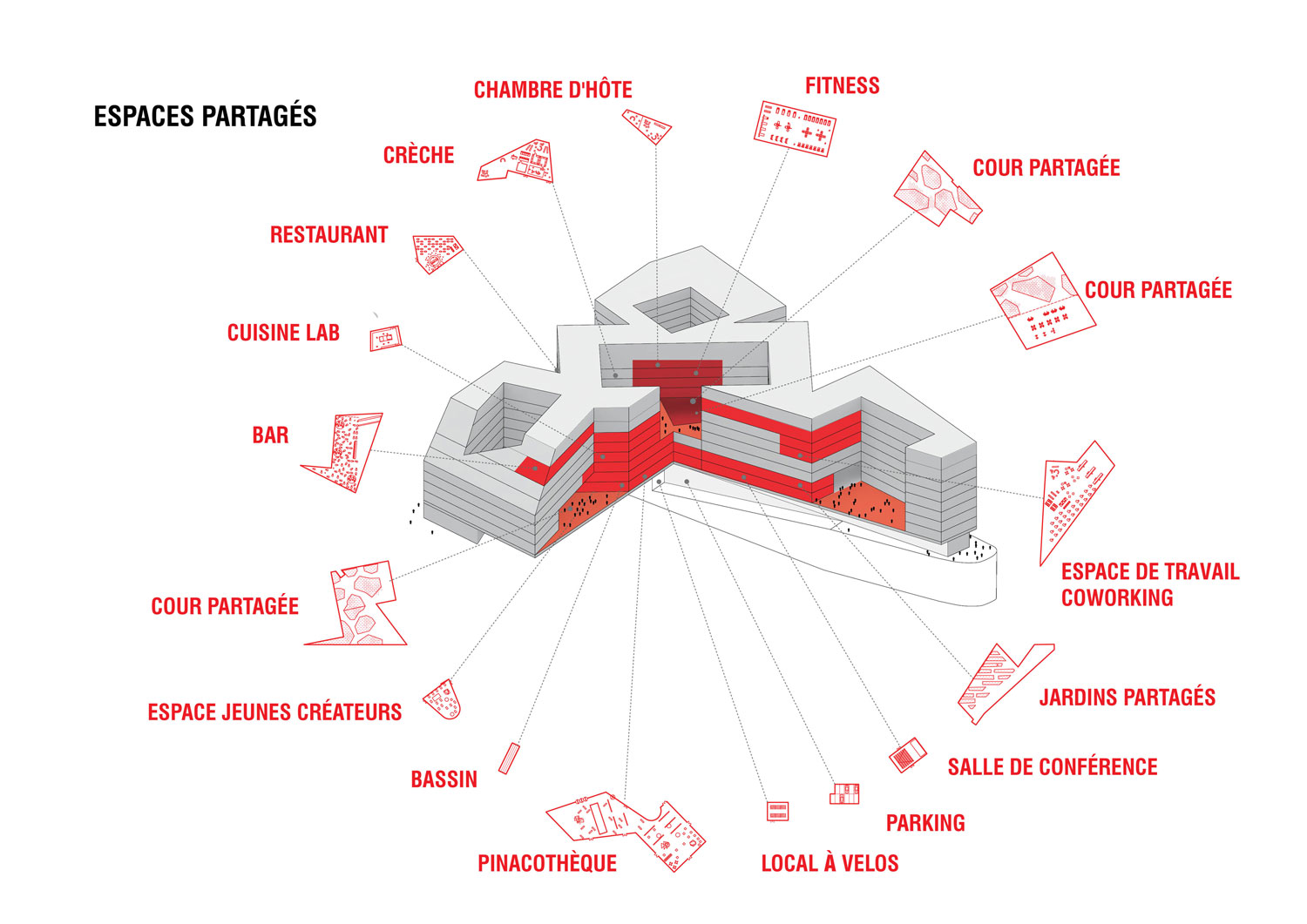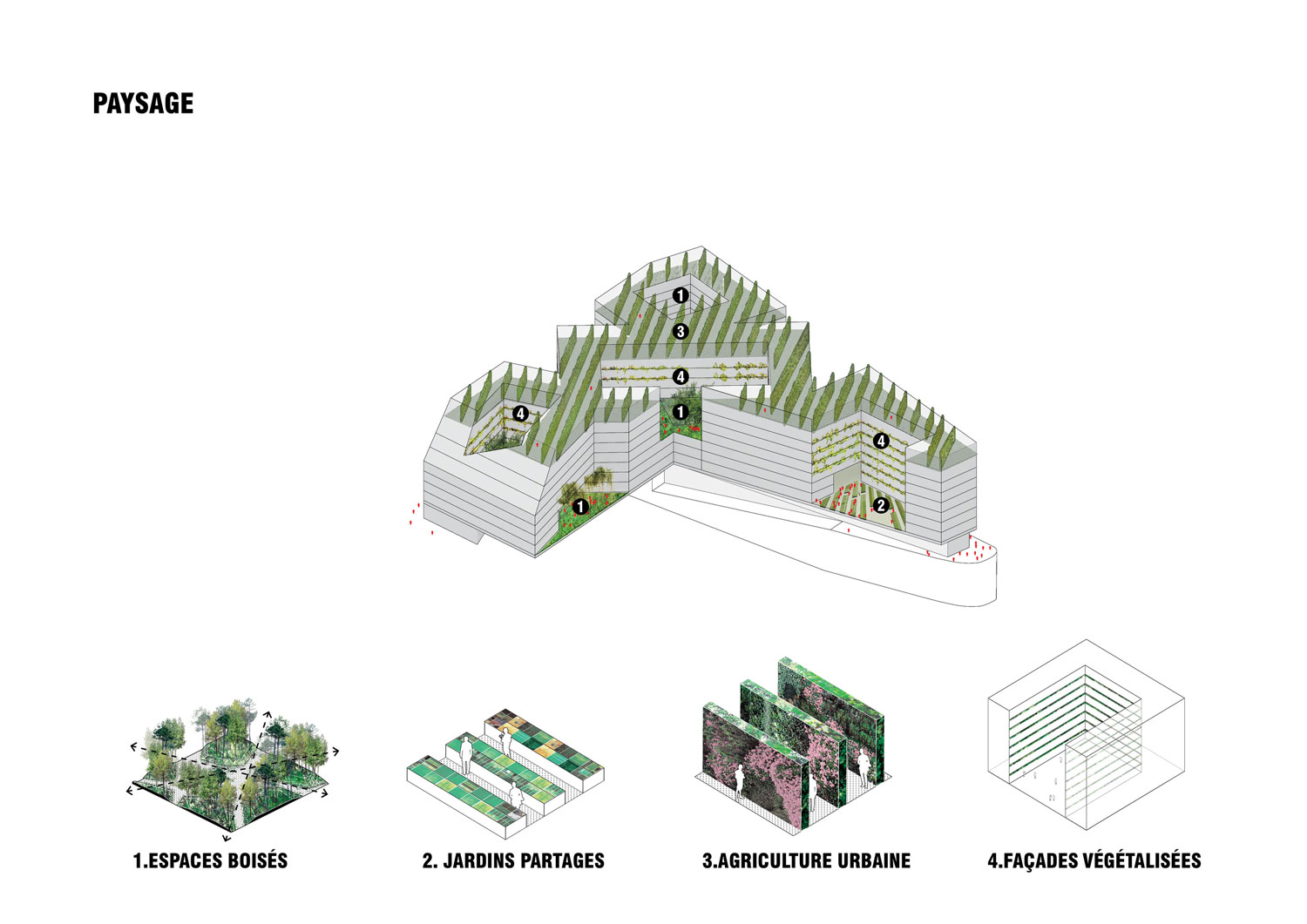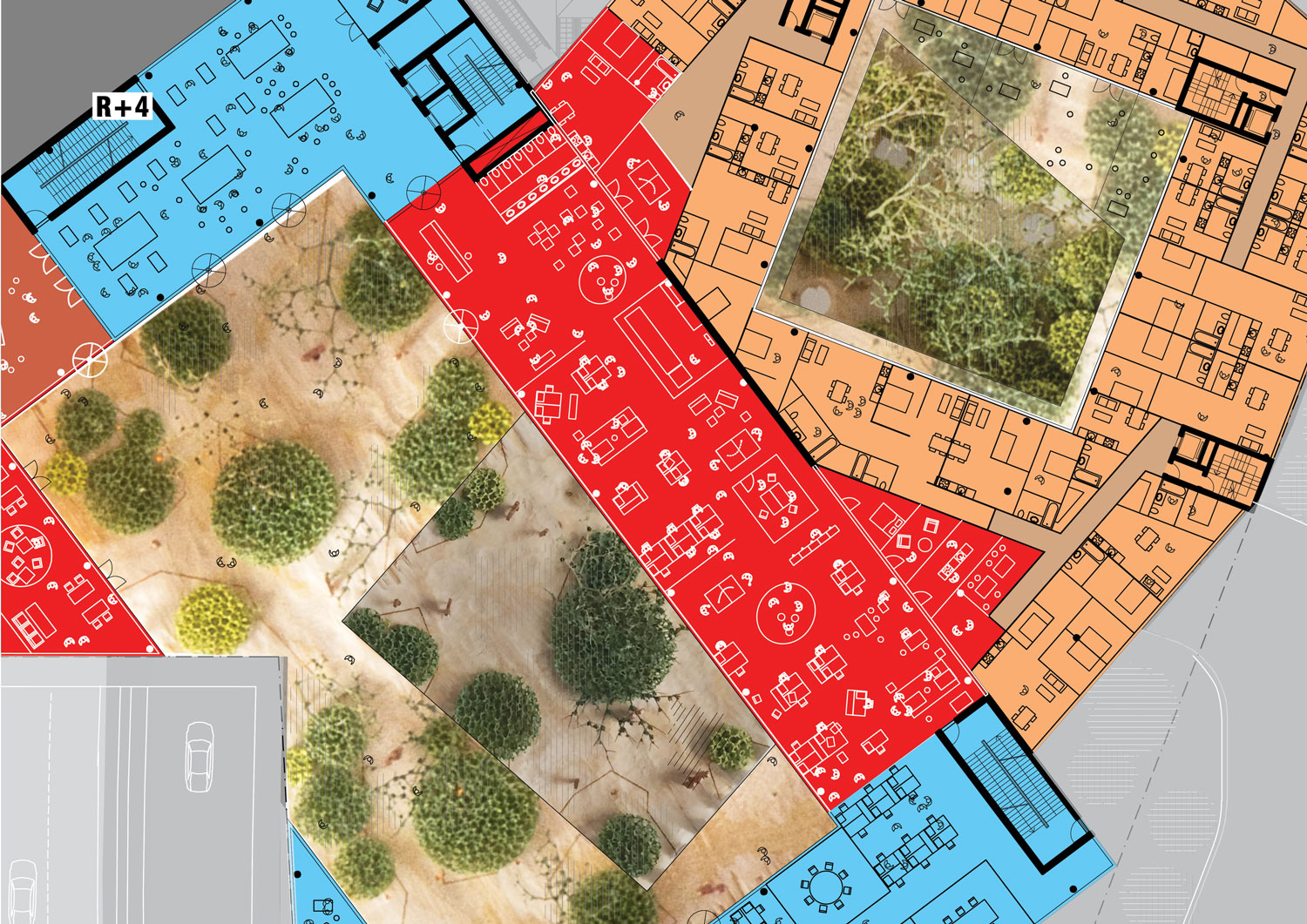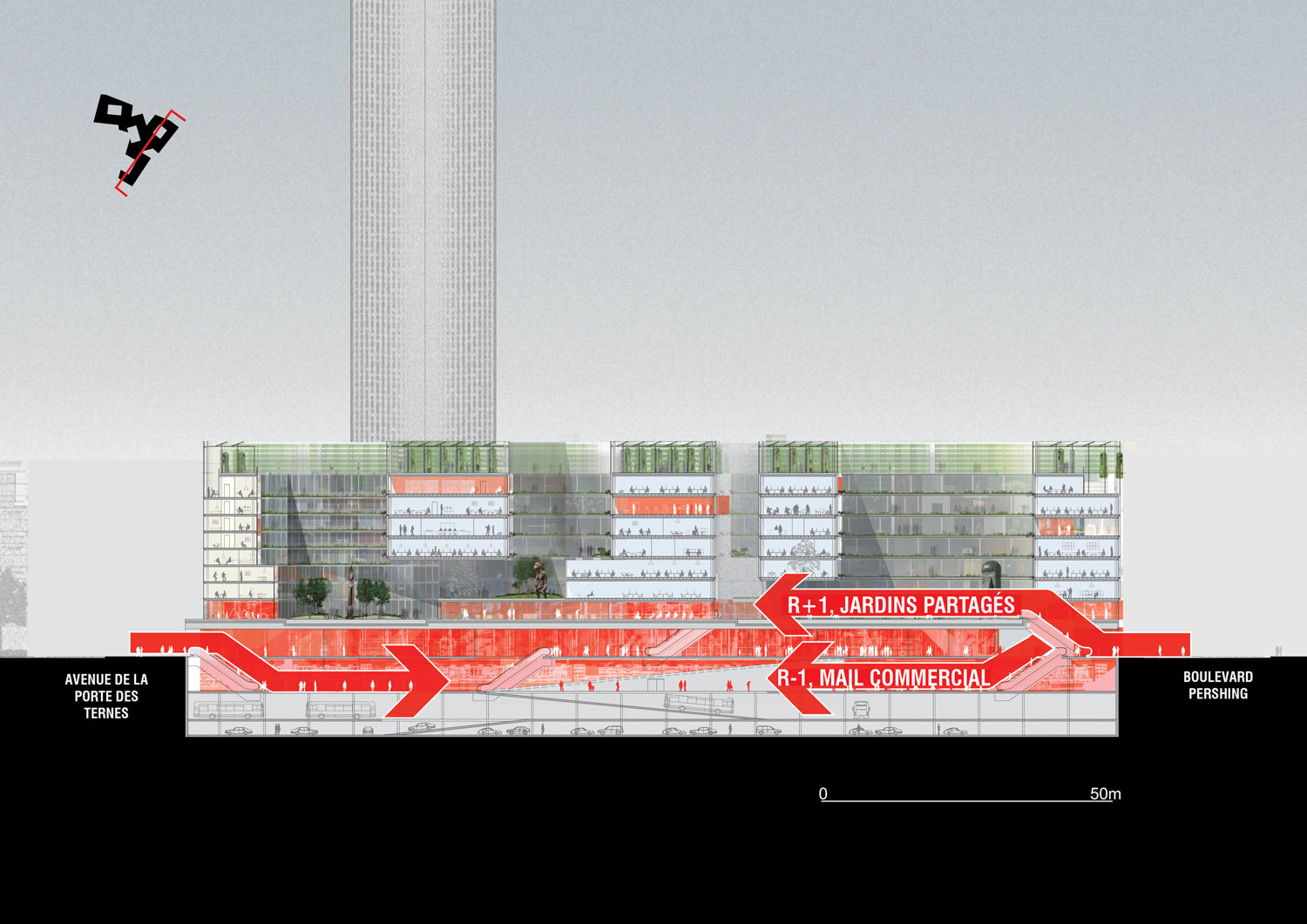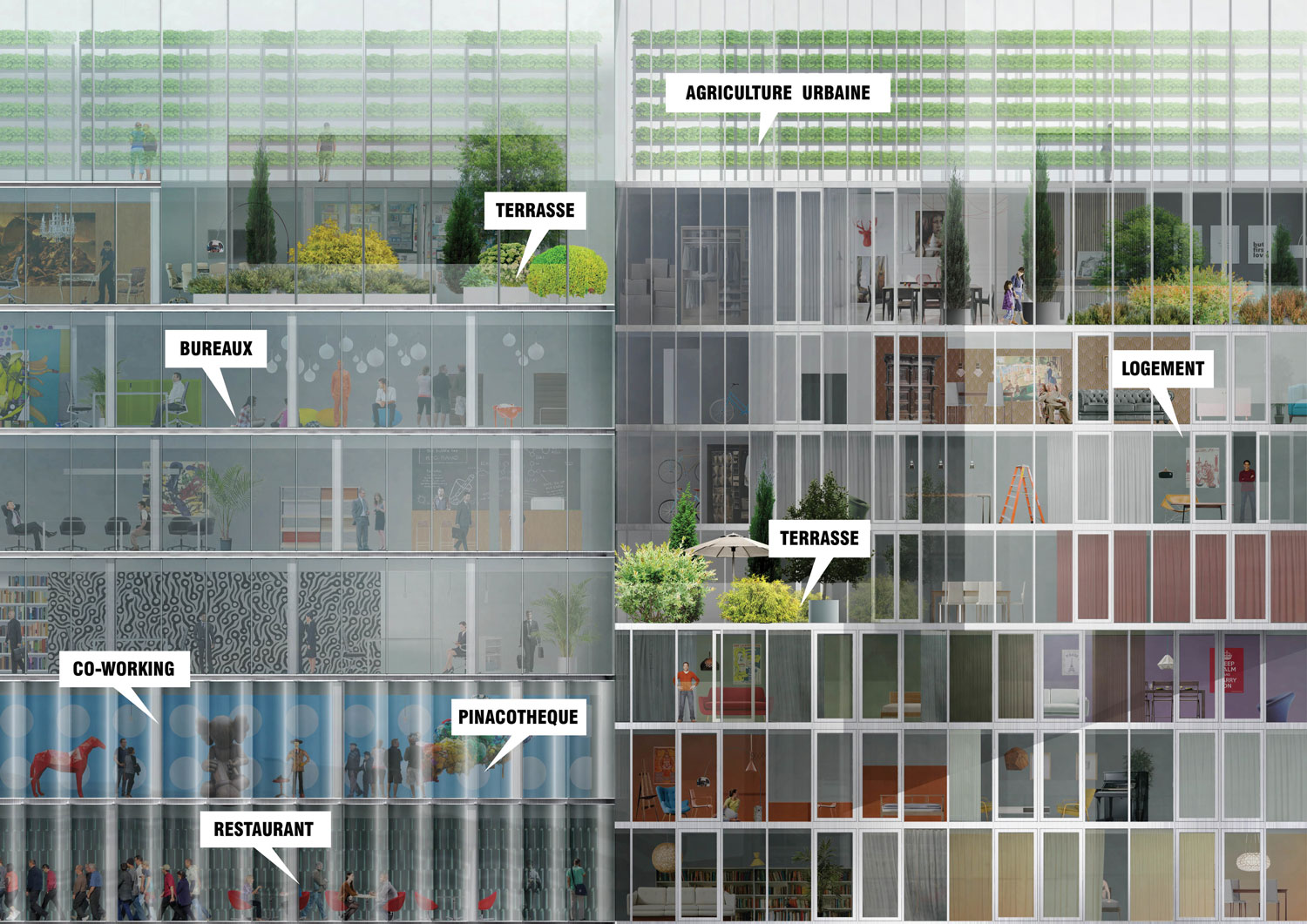1932-OMA-PAR.FR-2015.16
Client: Gecina
Status: Project (2015)
Location: Paris, France
Coordinates: 48.880563, 2.282832
Climate: Oceanic / maritime, Temperate
Materials: Glass, Vegetal
Environment: Urban
Visualizers: Tegmark, Luxigon
Scale: Large
Types: Cultural, Mixed use, Office, Office building
The project PXP: The Shared City proposes to create an urban space dedicated to sharing and innovation. The building, which is positioned on the axis that links the historical tourist areas of Paris and the business district of La Défense, functions as a mixed-use structure with a key position in the development of Greater Paris.
Social hub
The historic city of Paris, its agorà, its streets and its squares are based upon the concept of sharing. It is the reason for the city to exist: as a response to the need for citizens to gather, to exchange ideas, goods, and to find a place for representation. In order to stimulate the existing potentials of Paris and to create a new place where innovation can fully express and develop itself, PXP proposes the reinvention of urbanity through a unique architectural strategy.
Four traditional types of courtyards are brought together, thus creating a diversity of floor plans, which range from generic to eccentric, and allow for different forms of colonization. The result is an experimental alternation of identities: while the building extends continuously over the whole site, the diversity of courtyards provides the impression of a collection of architectures rather than a single mass.
PXP is located on a site with great potential; it forms a natural hub for surrounding trading, leisure and catering activities and sharing spaces and integrates an existing bus station. To stimulate the development of this area and establish its nodal function, PXP aims to facilitate urban and suburban connections and the convergence of transport modes, ways of living and working, a diversity of public activities and sustainable development approaches. The ground floor is permeable through its fragmented design, which allows flows of neighborhood and city life to enter. Multiple angles, geometries, fractures and terraces bring the public space into the interior of the building.
Mixed-use program with shared spaces
The complexity of the program offers an opportunity to propose new ways to bring a diversity of functions together: working, living, consuming, cultivating, entertaining and exchanging. The core of PXP consists of spaces designed to accommodate traditional programs: offices, housing, hotel, retail and parking functions. Revolving around them is a collection of shared spaces, which takes up a fifth of the site. The sharing concept is applied in each component of the program, from the gardens to the parking spaces, as well as the offices and shops.
Sharing spaces are distributed within the building, allowing federate users, residents and the people passing the public spaces to meet each other. The main shared spaces are located on the first and second floors. These large floors can accommodate double height programs including large auditoriums as well as waiting areas for bus station passengers, spaces for fitness, offices (co-working, meeting rooms, lecture rooms) nurseries, bi-homes, cafes and restaurants.
The transparent facade allows a reading of the programmatic diversity, and its inflections unveil alternately more intimate spaces and generous openings to the city. The internal courtyards form public squares, the scale of which echoes the Parisian urban fabric.
Landscape
Landscaping is an important aspect of PXP, contributing to its integration into the urban fabric and the manifestation of its uniqueness. The landscape intervention offers a range of spaces that ensure high biodiversity. The landscaping of the site consists of three main components: planted courtyards, green facades and urban agriculture. Through shared gardens which involve local residents, the project strengthens the social ties in the neighborhood, allowing residents to garden individually and / or collectively.
The roof of the building, entirely dedicated to urban agriculture renewable energy, places the building and its users in a system of shared economy and responsible proximity. The productivity of the 5800 m² of urban farming is estimated at 8 tons per year of fruits, vegetables, herbs and edible flowers. The zero energy goal locates the project in the sustainable dynamics of the Climate Plan.
PXP acts as a bridge, both metaphorically and functionally. It is based on a bold structural principle: a suspension of urban space which supports the infrastructure that crosses it. The base of the building supports a structure which can be adapted to the requirements of innovative programs, but also to the more conventional programs that are essential to the project. With the multitude of networking and exchange opportunities PXP enables, it offers a new site for the public and private spheres to meet and a new type of uses to emerge.
The permeability of the programs will allow users to interact around shared facilities. The project thus facilitates the development of sharing economies and accommodates changing lifestyles. PXP arises as a precursor of the innovative and shared city, integrating digital interfaces and solar technology and promoting new forms of mobility.
